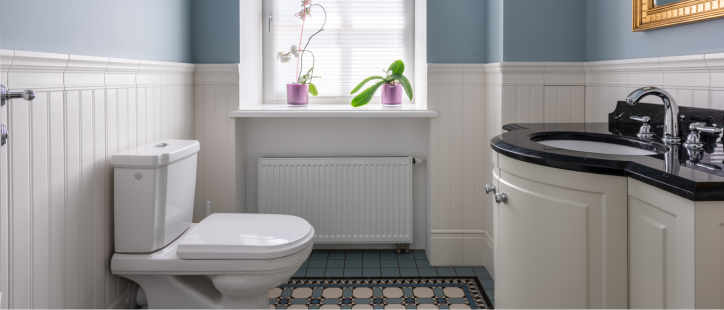Winter in Massachusetts’ North Shore and Merrimack Valley can bring picturesque landscapes and cozy evenings by the fireplace, but it also comes with the potential for a plumbing nightmare: frozen pipes. When temperatures plummet, pipes in your home can freeze, leading to a host of issues, including burst pipes and water damage. Knowing how to handle this situation is crucial for preventing costly repairs and inconvenience. In this helpful guide, the experts at Maffei Services will walk you through what to do if your pipes freeze and offer tips for preventing future freezes.
Signs of Frozen Pipes
Before we delve into what to do if your pipes freeze, it’s important to recognize the signs of frozen pipes:
- No Water Flow: When you turn on a faucet and no water comes out, it may indicate a frozen pipe.
- Frost on Exposed Pipes: If you can see frost on the outside of a pipe, it’s likely frozen.
- Strange Odors: A strange odor, similar to sewage, can occur if a frozen pipe has burst and wastewater is not draining properly.
- Bulging or Cracked Pipes: If a pipe has burst due to freezing, you may notice a bulging or cracked section.
What to Do If Your Pipes Freeze
If you suspect your pipes have frozen, follow these steps to address the situation:
1. Keep the Faucet Open:
First and foremost, open the faucet connected to the frozen pipe. This relieves pressure in the system, reducing the risk of a burst pipe when the ice thaws.
2. Locate the Frozen Area:
Determine which pipes are frozen. Typically, frozen pipes occur in unheated areas of your home, such as the basement, attic, or crawl spaces. Look for visible frost or bulging pipes.
3. Thaw the Pipe:
There are several methods to thaw a frozen pipe:
- Use a Hairdryer: Point a hairdryer at the frozen section of the pipe and move it back and forth. Start at the faucet end and work your way toward the blockage.
- Use a Heating Pad or Towel: Wrap a heating pad or a towel soaked in hot water around the frozen pipe. Continue until water flows freely.
- Apply an Electric Pipe Heating Tape: If you have an electric pipe heating tape, follow the manufacturer’s instructions to safely thaw the pipe.
- Never Use an Open Flame: Avoid using open flames, such as propane torches or kerosene heaters, to thaw pipes, as they can damage pipes or create a fire hazard.
4. Monitor for Leaks:
While thawing the pipe, keep an eye out for any signs of leakage. If you notice a leak, turn off the water supply to that section of the plumbing or the entire house if necessary.
5. Insulate Pipes:
After thawing the frozen pipes and ensuring they are intact, take preventive measures to avoid future freezes:
- Insulate Exposed Pipes: Insulate any exposed pipes in unheated areas with pipe insulation or heating tape. Pay close attention to pipes near exterior walls.
- Keep Cabinets Open: If you have pipes under sinks along exterior walls, leave the cabinet doors open during extremely cold weather to allow warm air to circulate around the pipes.
- Seal Gaps and Cracks: Seal any gaps or cracks in the walls or foundation of your home that allow cold air to reach pipes.
- Maintain Consistent Heat: Keep your home heated consistently, even when you’re away, to prevent pipes from freezing during cold snaps.
When to Call a Professional
While many frozen pipe issues can be resolved using the steps outlined above, there are situations where it’s best to call the professional plumbers at Maffei Services:
- Multiple Frozen Pipes: If multiple pipes have frozen, or if you’re unsure about the extent of the problem, it’s advisable to seek professional assistance.
- Burst Pipes: If a pipe has burst due to freezing, immediately shut off the water supply to that area and call a plumber to assess the damage and make necessary repairs.
- Lack of Access: If you cannot access the frozen pipe or are uncomfortable attempting to thaw it yourself, a plumber can safely handle the situation.
Preventing Frozen Pipes
Prevention is the key to avoiding the headache and expense of frozen pipes. Here are some additional steps you can take to prevent future freezes:
- Install Pipe Insulation: Insulate all exposed pipes in your home, especially those in unheated areas. This is a highly effective preventive measure.
- Seal Gaps and Cracks: Regularly inspect your home for gaps and cracks in walls and the foundation, and seal them to prevent cold air from infiltrating.
- Let Faucets Drip: On exceptionally cold nights, allow faucets connected to vulnerable pipes to drip slowly. The flowing water is less likely to freeze.
- Keep Heat On: Even if you’re away, maintain a consistent indoor temperature to prevent freezing.
- Disconnect and Drain Outdoor Hoses: Before winter arrives, disconnect and drain garden hoses, and shut off the outdoor water supply if possible.
- Consider Pipe Heating Cables: For pipes in extremely cold areas, consider installing pipe heating cables that provide constant warmth.
Dealing with frozen pipes is a common winter challenge, but with the right knowledge and precautions, you can minimize the risk and effectively address the issue if it arises. Remember that safety should always be a top priority, and when in doubt, it’s best to consult the professional plumbers at Maffei Services to handle frozen pipe problems. By taking preventive measures and promptly addressing freezing issues, you can keep your plumbing system running smoothly throughout the winter months and enjoy a cozy, stress-free season.



